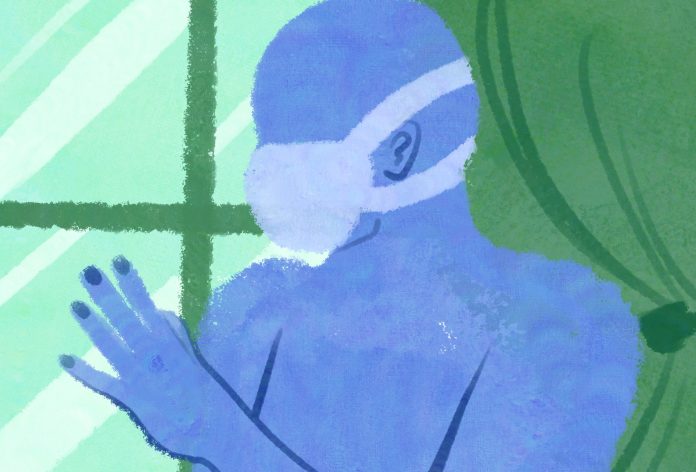Eric Kwon
Science & Technology Editor
The new Omicron variant has proved to be a different beast in comparison to the Delta variant and its predecessor. After what seemed to be a period of returning normalcy from the Delta variant, COVID-19 struck again, thus initiating a series of all too familiar lockdowns. However, Zach Aralis, a PhD candidate at UC Santa Barbara, has created a rapid test specifically for the Omicron variant.
In an interview with The Bottom Line, Zach Aralis — who works with virology in professor Carolina Aria’s lab of molecular, cellular, and developmental biology — discussed the particulars of his research, as well as his insights into the Omicron variant.
To understand why research and innovation in specific relation to Omicron are important, one must understand how it distinguishes itself from its other variants. The Omicron variant, as Aralis claims, is the most divergent of the variants, meaning that it has the most mutations. More mutations mean a greater risk of danger. Additionally, another factor that has made the Omicron variant alarming is its rapid case increases, which first arrived out of South Africa. Data on the Omicron variant is still being gathered.
Though an exhaustive store of knowledge is not available on the Omicron variant, Aralis knew that there must be a more efficient way to test for the variant. “The gold standard at the moment for determining what variants a particular patient has is to do a whole genome sequence on the viral genome,” Aralis said. Though this test gives all the mutations available in that viral strain, the staggering amount of information makes obtaining data slower than what is ideal. Slow, as in weeks to a month.
Therefore, Arias sought to create a test that was more efficient. “Designing this test was about going through and finding areas of the Omicron genome that were heavily mutated in a small region. That gave us something to target.” With that, Omicron identification became much easier, creating a system of data collection that needed much less information in order to operate. With his new test, results could arrive in hours.
When asked about his thoughts on the direction the Omicron variant will head, he hoped that dealing with the Omicron variant would be better than other variants. Though the Omicron variant contractions are shooting way up, he expected the numbers to go down dramatically as well. The main thing, of course, is whether or not rates of infection will be able to decrease too.
Aralis mentioned that the “global community is more or less prepared,” as people are familiar with lockdowns and being in a pandemic in general. He did worry about COVID-19 fatigue, however, where the “burnout from being in a pandemic is very real” and people will more easily forgo the concerns for their health, or even just stop caring altogether, no matter how much scientific evidence there is.
Aralis wished he developed the test sooner, as earlier development would have meant being able to catch the virus earlier, thus containing the outbreak. Moving forward, he is concerned about what may come after the Omicron variant. As he continues his research, he thinks about how he might be able to create a test further ahead of time to be more prepared for a future COVID-19 variant.











